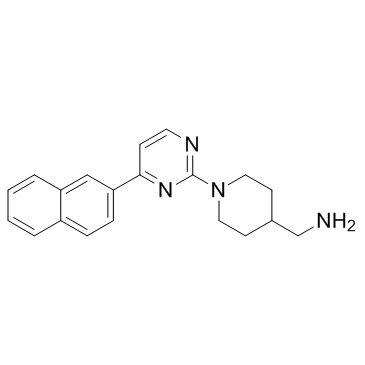| Description |
WAY-262611 is a wingless β-Catenin agonist that increases bone formation rate with an EC50 of 0.63 μM in TCF-Luciferase assay.
|
| Related Catalog |
|
| Target |
EC50: 0.63 μM (β-Catenin)[1]
|
| In Vitro |
WAY-262611 has the most potent activity in the primary assay, low kinase inhibition potential, and high solubility[1].
|
| In Vivo |
WAY-262611 has excellent pharmacokinetic properties and shows a dose dependent increase in the trabecular bone formation rate in ovariectomized rats following oral administration. Calvariae from wt mice treated with WAY-262611 shows statistically increased BFR, while similarly treated KO animals are no different from control. This indicates that WAY-262611 is acting via the Wnt β-catenin pathway and most likely through inhibition of Dkk-1[1].
|
| Animal Admin |
Rats: WAY-262611 is dissolved in DMSO and diluted with saline for iv (Rats). WAY-262611 is prepared in 0.5% methylcellulose/2% Tween-80 for po OVX rats14 are treated orally with 5 (po, vehicle=0.5% methylcellulose/2% Tween-80, qd, 28 days) at four doses. Trabecular bone formation rate (BFR) in the tibia is established in all dose groups at the end of the in-life portion of the study. A clear dose response and activity as low as 0.3 mg/kg/day are observed[1]. Mice: To confirm activity via the Wnt pathway, the calvariae of wild type (wt) and Dkk-1 knockout (KO) mice are treated with 5 once a day for 7 days (DMSO solution, sc injection). The KO animals are not expected to respond because of the inherent inability to inhibit a missing target protein, while wild type animals with fully expressed Dkk-1 are expected to show a pharmacological response [1].
|
| References |
[1]. Pelletier JC, et al. (1-(4-(Naphthalen-2-yl)pyrimidin-2-yl)piperidin-4-yl)methanamine: a wingless beta-catenin agonist that increases bone formation rate. J Med Chem. 2009 Nov 26;52(22):6962-5.
|
